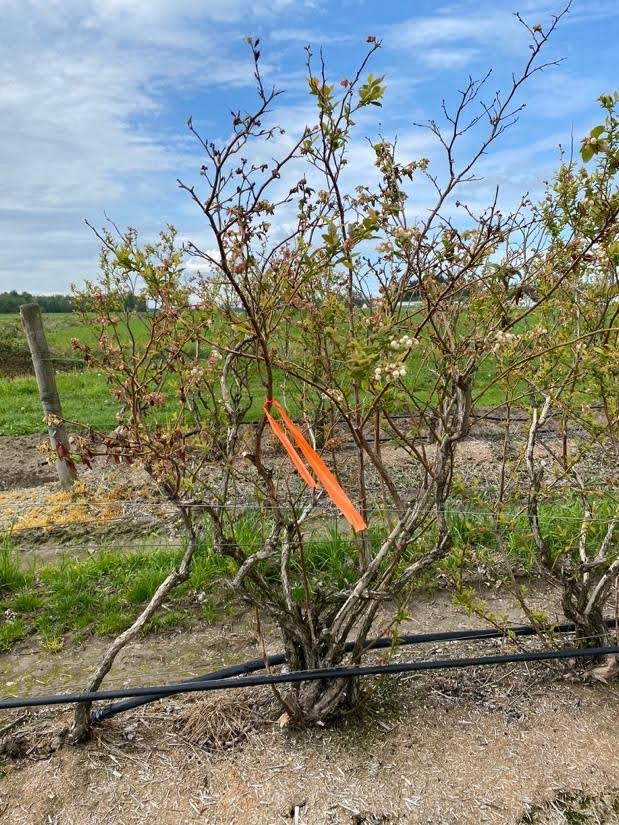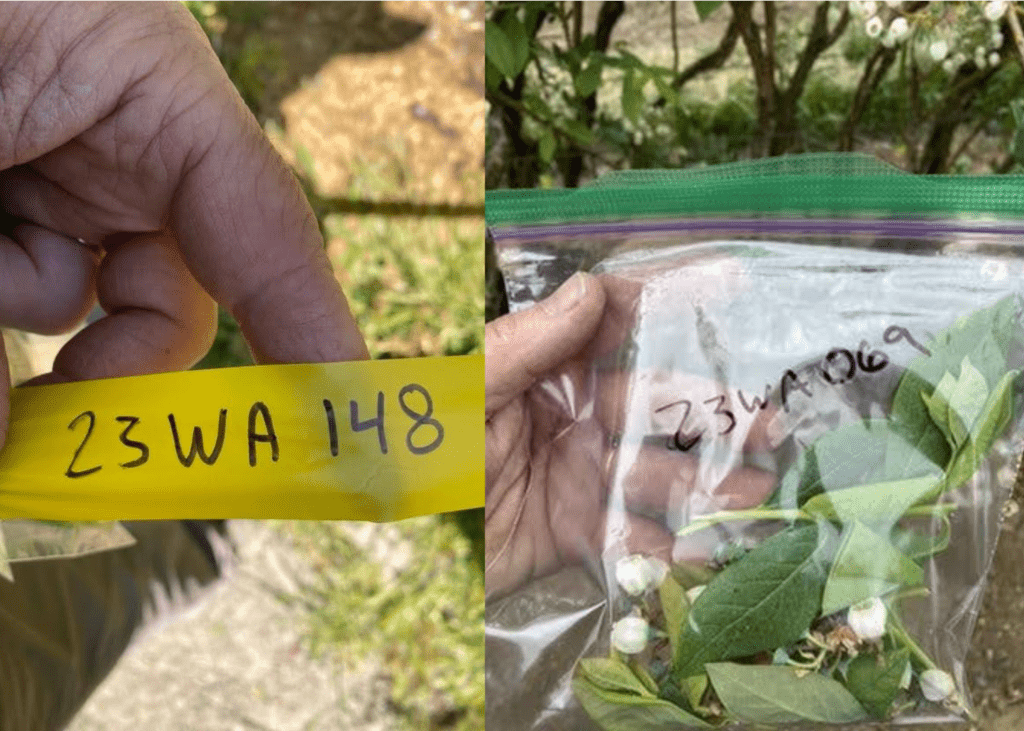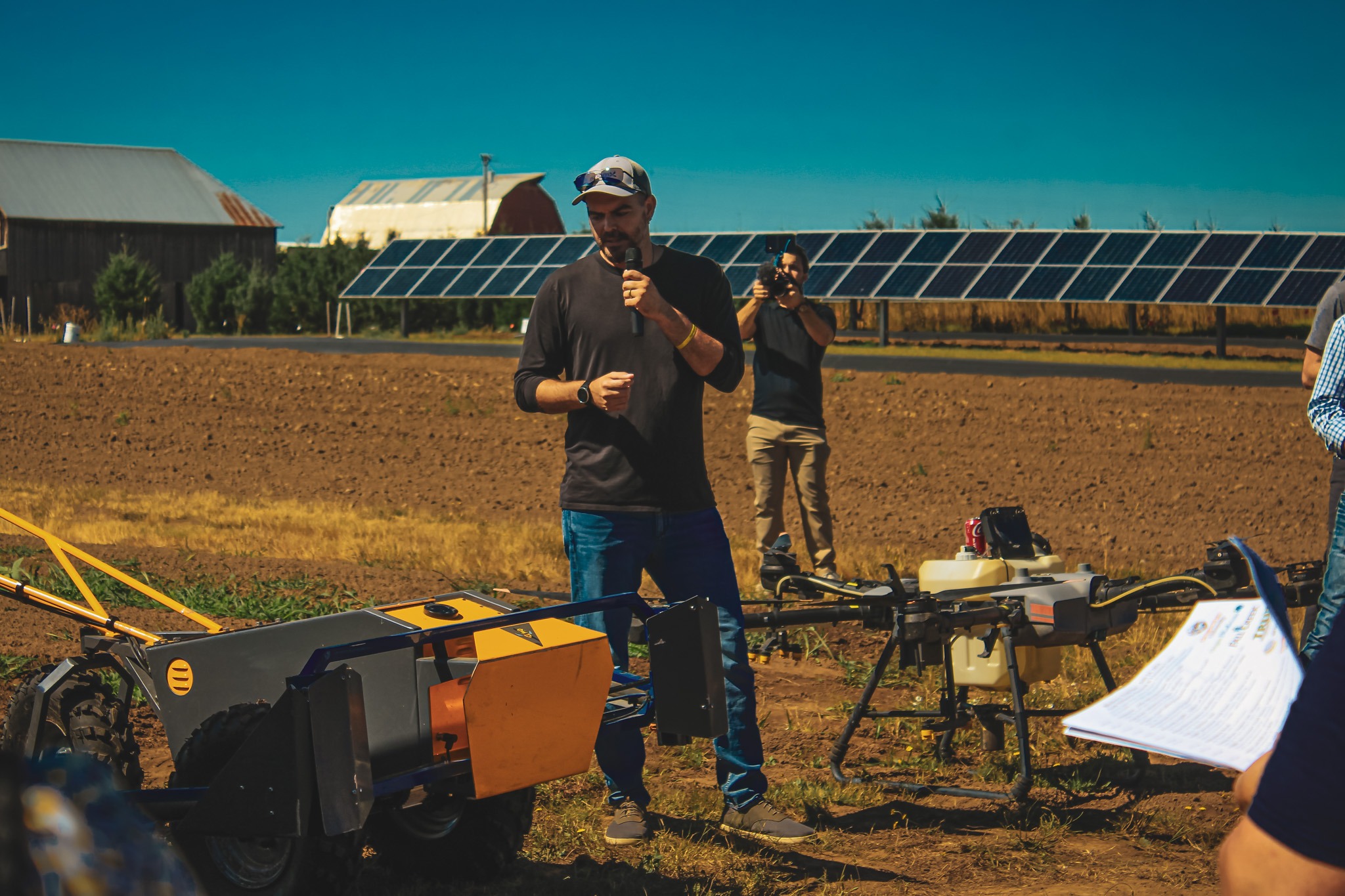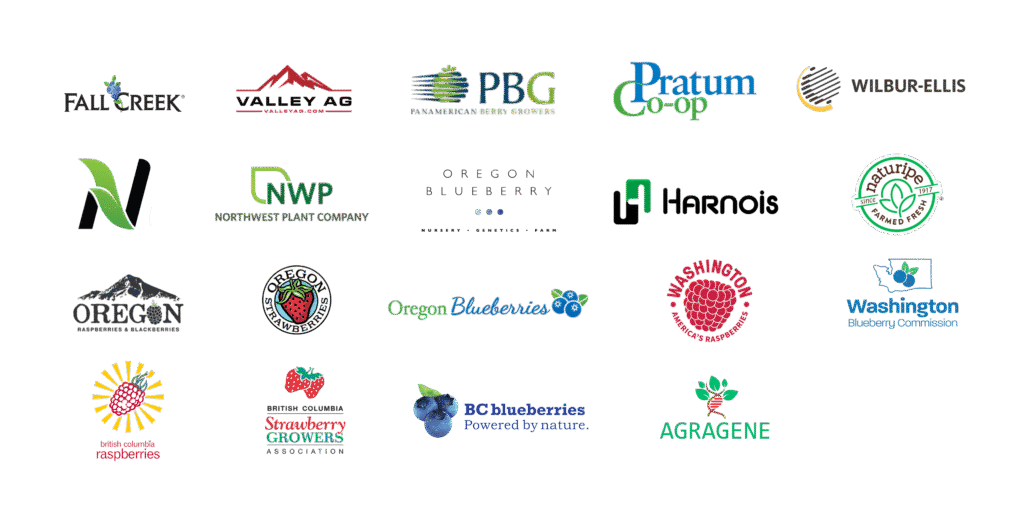
For a second year, the Washington Blueberry Commission is once again paying for virus testing of blueberry plants in Washington State. The Oregon Blueberry Commission is following suit with their own virus testing program which is new this year. All growers who paid assessments in 2024 qualify. The samples are processed by Phyto Diagnostics Laboratories in Saanich, BC; this is the same lab that does thousands of tests per year for BC blueberry growers. Each sample will be ELISA-tested for Blueberry Shock (BlShV) and Scorch (BlScV) viruses. Testing is confidential and turnaround is fast, often within a week of receipt by the lab. So, you’ll have results in time to act on the results by removing BlScV-infected plants, doing follow up testing, or upping your aphid management program.

Does the plant in Figure 1 have BlShV, BlScV or something else?
Can’t tell by looking? Me neither. The problem is, BlShV is just something we have to wait out, but BlScV is another story altogether. When this virus is present, it will render plants unproductive and eventually take out the field if left unchecked. BlScV affects all known varieties of blueberry. Although some varieties seem to be slower to show symptoms, the virus will eventually kill plants of all of these varieties, after it has rendered them unproductive. Certainly NOT something to wait out! BlScV is not all that uncommon, either. In our 2023-2024 survey, NBF and Walters Ag Research found BlScV in roughly 1/3 of the WA and OR fields with Shock/Scorch symptoms. Fortunately, if you find BlScV in your field, you can manage the problem by testing symptomatic plants and removing those that test positive, and scouting for and managing aphids season long.
The virologists have been busy finding new viruses in blueberry. Now we know there is also Blueberry Virus S, which is a lot like BlScV. Thankfully, the ELISA test for BlScV appears to detect S as well. There is also Blueberry Virus L, which is extremely widespread across North America. And also Blueberry Virus M, which may or may not be so widespread, and Blueberry virus N, reportedly a cousin of M. We don’t yet know which viruses or virus combinations cause symptoms, and don’t yet have affordable tests for the new viruses (although they are coming). The picture will get more complicated, and hopefully more accurate as we learn more, but for now we know that BlScV can and will make plants unproductive and kill them. So, it’s worth paying attention to this virus, even though we don’t know the whole picture yet.
Identify fields or areas of fields to scout for symptoms of BlScV. The classic symptoms are wilting and necrosis of floral and leaf buds mid-bloom, often affecting an entire branch, part of a plant, or a whole plant. Other symptoms to watch out for are low vigor and small plants next to dead ones. Two or three symptomatic plants together should make you suspicious. You don’t have to restrict yourself to classic symptoms though: take some samples from that corner of the field where the plants have always been a bit yellow and “meh”. Maybe even test a field just because you know it’s had aphid problems in the past.
Collect at least 10 leaves from each plant, focusing on taking leaves from close to symptomatic areas, when possible. Place leaves in a labeled ziplock bag, and put an identical label on the plant. Make a note of where the plant is in the field, so you can find it again later. Store your bags in a refrigerator or cooler (do NOT freeze) until you drop them off or ship them. PhytoDiagnostics has an excellent guide to sample collection.
After identifying fields or areas of fields with symptoms of BlScV (wilting and necrosis of floral and leaf buds mid-bloom, yellowing/low vigor or small plants next to dead ones), contact the Northwest Berry Foundation, by filling out this virus sampling request form or emailing info@nwberries.org or call (503)729-0054. At the start of the season, growers will be limited to five fields sampled but that could change depending on number of grower testing requests received per season. For consistency, the Northwest Berry Foundation will collect and ship samples.
Arrange your samples sequentially, in groups of 10-20, and staple together in the upper left corner. Fill out the Phyto Diagnostics sample submission form.
You can drop your samples off at two locations, listed below. They will be stored refrigerated there, and will be shipped to the lab within two weeks.
Drop-off Locations:
Washington Red Raspberry Commission Office
Gavin Willis
204 Hawley St Lynden,
WA 98264
(360) 354-8767
WSU-Mt Vernon NWREC
Chakradhar Mattupalli
16650 SR 536 Mount Vernon,
WA 98273
(360) 848-6124
You can also ship your samples yourself. Follow Phyto Diagnostics’ guidance for packaging and shipping on their website. Be sure to include two copies of the required Import Permit, and be sure that the commercial invoice lists a value of less than $10. The item description on the invoice should read “Blueberry leaf samples for virus testing only. Leaves are destroyed as part of the testing process”. I don’t know why else someone would ship blueberry leaves to a lab, but this is apparently important to Customs.

Tom Walters, Walters Ag Research
Administrator and chief leaf picker, Washington Blueberry Virus Surveillance Program


We have organized our mailing list to better serve our audience. Subscribe to receive exclusive updates from our weekly SFU newsletter or join our communications list for industry news, our events, forum alerts, and more. No spam. Just updates.